Anglo saxon riddles and answers – Anglo-Saxon riddles and answers captivate us with their enigmatic nature, offering a glimpse into the imaginative minds of our ancestors. These riddles, steeped in history and culture, challenge our intellect and invite us on a journey of discovery.
Anglo-Saxon riddles are more than mere puzzles; they are windows into the Anglo-Saxon worldview, revealing their beliefs, values, and daily lives. Their intricate structures, use of kennings, and clever wordplay make them both intellectually stimulating and aesthetically pleasing.
Anglo-Saxon Riddles
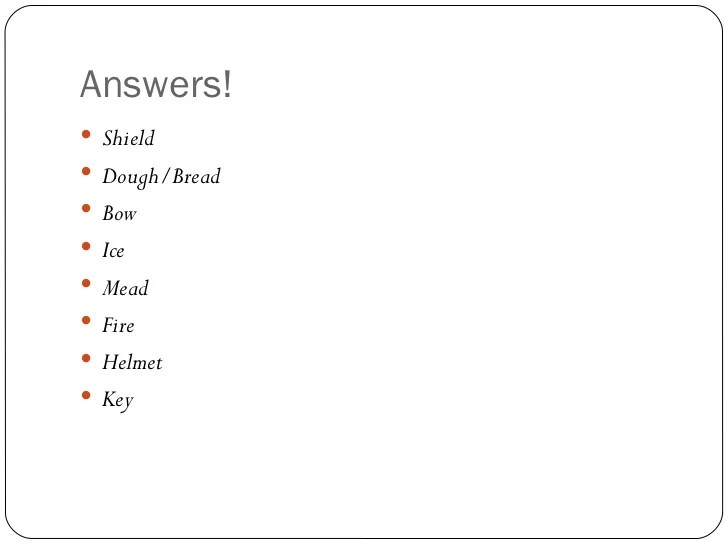
Anglo-Saxon riddles, known as “rædels” in Old English, are a fascinating glimpse into the culture and creativity of the Anglo-Saxons. These enigmatic verses, often composed in poetic form, challenged the wit and ingenuity of listeners and readers alike.
Originating in the early Middle Ages, Anglo-Saxon riddles were a popular form of entertainment and education. They were often shared orally, passed down through generations, and eventually compiled into written collections. These collections, such as the famous Exeter Book, provide a rich source of material for scholars and enthusiasts.
Types of Anglo-Saxon Riddles
Anglo-Saxon riddles can be broadly classified into several types:
- Enigmatic Riddles:These riddles are characterized by their obscurity and require a high level of interpretation. They often use metaphors, similes, and other figurative language to describe the object or concept in question.
- Kenning Riddles:Kennings are poetic compounds that describe something indirectly through its associations or attributes. Kenning riddles use these kennings as clues to identify the object.
- Proverbial Riddles:These riddles are similar to proverbs and express a moral or philosophical truth. They often use a riddle format to make the message more memorable.
- Numerical Riddles:These riddles use numbers and mathematical concepts to describe the object or concept.
Structure and Form of Anglo-Saxon Riddles
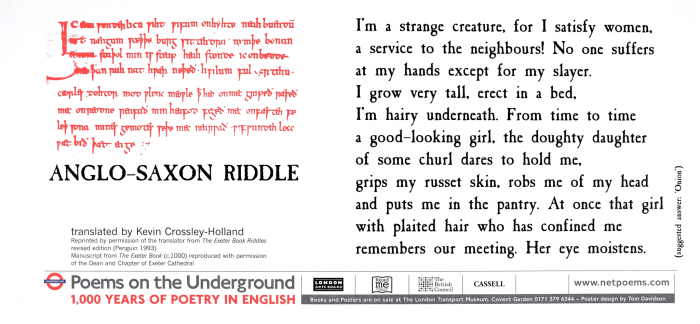
Anglo-Saxon riddles are renowned for their intricate structure and poetic devices. They typically follow a specific form, beginning with a riddle that presents a puzzling description or question. The riddle often employs kennings, metaphors, and other poetic devices to create a sense of mystery and challenge the solver’s ingenuity.
Use of Kennings, Anglo saxon riddles and answers
Kennings are a defining characteristic of Anglo-Saxon riddles. They are compound words or phrases that use vivid imagery and unconventional combinations to describe an object or concept. For instance, the riddle “I am a warrior in the sky, with a horn and a helmet” uses the kenning “warrior in the sky” to refer to the moon.
Metaphors and Poetic Devices
Anglo-Saxon riddles also make extensive use of metaphors and other poetic devices. Metaphors create implicit comparisons between two things, such as “I am a weaver who weaves a web of words” to describe a writer. Other poetic devices, such as alliteration and assonance, add musicality and rhythm to the riddles.
Anglo-Saxon riddles and answers are a fascinating glimpse into the minds of our ancestors. They often feature clever wordplay and metaphors, and can be quite challenging to solve. If you’re looking for a fun way to test your wits, check out y no se lo trago la tierra pdf . This collection of riddles and answers is sure to keep you entertained for hours on end.
Anglo-Saxon riddles and answers offer a unique way to learn about the culture and history of our ancestors.
Significance of the Solution
The solution to an Anglo-Saxon riddle is often crucial to understanding its form and meaning. The riddle’s structure and poetic devices often hint at the solution, leading the solver to a moment of revelation. The solution also reveals the riddle’s underlying theme or purpose, which may be educational, entertaining, or philosophical.
Themes and Motifs in Anglo-Saxon Riddles
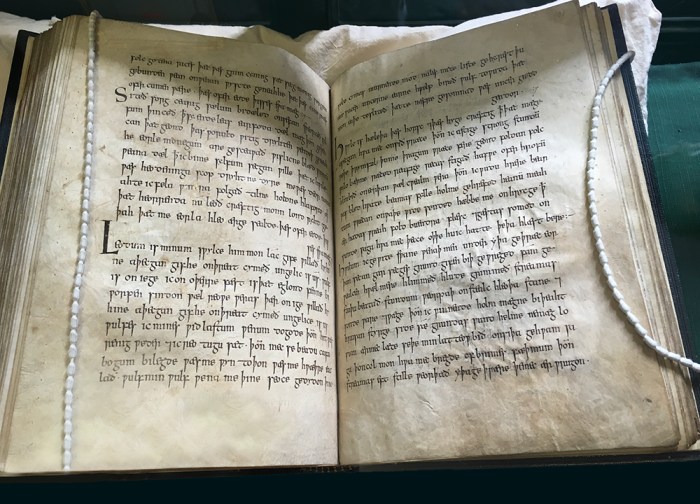
Anglo-Saxon riddles are a rich source of cultural and historical insights, and they explore a wide range of themes and motifs that provide a glimpse into the lives and beliefs of the Anglo-Saxons.
Nature and the Environment
Nature is a recurring theme in Anglo-Saxon riddles, reflecting the close connection between the Anglo-Saxons and their natural surroundings. Riddles often describe animals, plants, and natural phenomena, such as the following riddle about a fish:
I am a silent swimmer,Dwelling in the deep, With scales that gleam like silver, And fins that guide my leap.
This riddle not only provides a vivid description of a fish but also suggests the importance of animals in Anglo-Saxon culture and their role as a source of food and companionship.
Daily Life and Occupations
Anglo-Saxon riddles also shed light on the daily lives and occupations of the Anglo-Saxons. They describe objects and activities related to farming, hunting, cooking, and other aspects of everyday life. For example, the following riddle describes a plow:
I have a sharp nose,And a strong back, I dig the earth, And leave a black track.
This riddle provides insights into the importance of agriculture in Anglo-Saxon society and the tools used to cultivate the land.
Mythology and Religion
Anglo-Saxon riddles also draw on mythology and religion, reflecting the beliefs and values of the Anglo-Saxons. They often mention gods, goddesses, and mythical creatures, such as the following riddle about the devil:
I am black and full of sin,I tempt the weak, And lead them astray, I am the enemy of God, And the father of lies.
This riddle not only provides a glimpse into Anglo-Saxon beliefs about the devil but also highlights the importance of morality and the struggle between good and evil.
Cultural Significance of Anglo-Saxon Riddles: Anglo Saxon Riddles And Answers
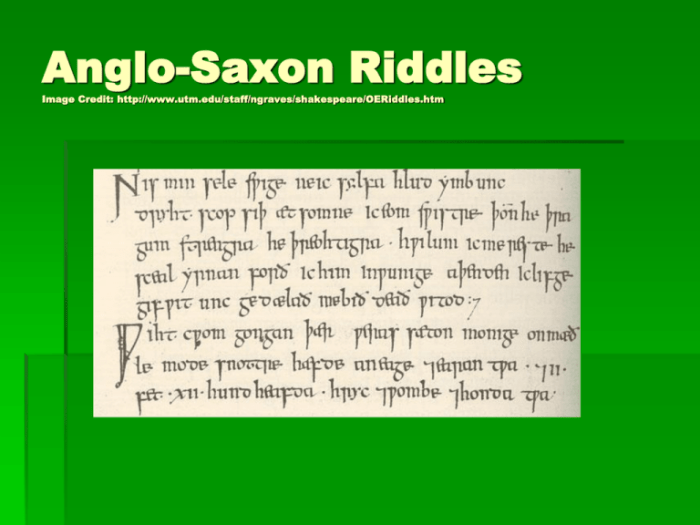
Anglo-Saxon riddles played a multifaceted role in Anglo-Saxon society, serving as a form of entertainment, education, and social interaction.
Riddles were a popular pastime among the Anglo-Saxons, providing both intellectual stimulation and amusement. They were often shared during gatherings, such as feasts and celebrations, and were used to test the wit and knowledge of participants.
Entertainment
- Riddles offered a playful and engaging way to pass the time, fostering a sense of community and shared enjoyment.
- They stimulated intellectual curiosity and provided a mental challenge, encouraging participants to think creatively and laterally.
- The act of solving riddles could evoke feelings of satisfaction and accomplishment, contributing to a sense of personal growth and intellectual prowess.
Education
- Riddles were used as a pedagogical tool to impart knowledge about various subjects, including history, geography, science, and religion.
- They provided a memorable and engaging way to learn about complex concepts, making education more accessible and enjoyable.
- Riddles fostered critical thinking skills, encouraging individuals to analyze information, draw inferences, and form logical conclusions.
Social Interaction
- Riddles facilitated social interaction and strengthened community bonds by providing a shared activity that could be enjoyed by people of all ages and backgrounds.
- They promoted communication and dialogue, encouraging individuals to engage in verbal exchanges and share their thoughts and ideas.
- Riddles created a sense of camaraderie and belonging, as participants worked together to solve puzzles and discover hidden meanings.
Anglo-Saxon riddles also have connections to other forms of medieval literature, such as epic poems and prose narratives. Many riddles employ literary devices such as metaphors, similes, and alliteration, which are also found in these other genres. Additionally, some riddles draw inspiration from mythological and historical figures, demonstrating the interconnectedness of Anglo-Saxon literature.
Modern Interpretations and Adaptations of Anglo-Saxon Riddles
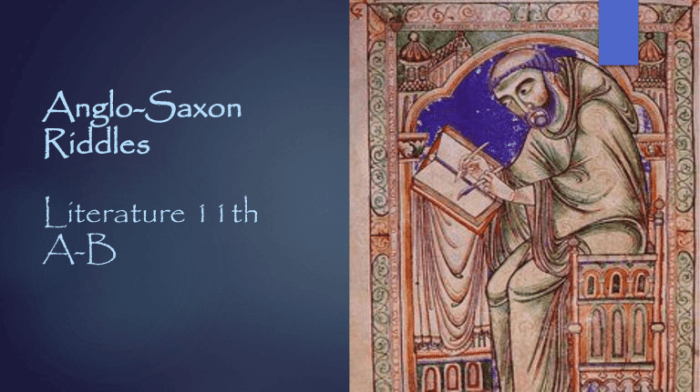
Anglo-Saxon riddles have captivated modern audiences, inspiring adaptations and interpretations that reflect contemporary sensibilities. These ancient enigmas continue to resonate, offering a glimpse into the minds and imaginations of our ancestors while providing a foundation for artistic expression.
Influence on Contemporary Literature
Modern literature has embraced Anglo-Saxon riddles, incorporating their enigmatic qualities into novels, poems, and short stories. Writers such as J.R.R. Tolkien and Ursula K. Le Guin have drawn inspiration from these riddles, using them to create complex puzzles and explore themes of identity, knowledge, and the nature of reality.
Art and Popular Culture
Anglo-Saxon riddles have also found expression in visual art. Artists have created paintings, sculptures, and installations that evoke the riddles’ imagery and enigmatic nature. In popular culture, these riddles have appeared in television shows, video games, and online puzzles, introducing a wider audience to their enduring appeal.
Examples of Modern Adaptations
- In his novel “The Hobbit,” J.R.R. Tolkien included the famous “Riddles in the Dark” scene, where Bilbo Baggins must solve a series of riddles to escape from the clutches of Gollum.
- Ursula K. Le Guin’s novel “The Left Hand of Darkness” features a character who is a master of riddles, using them to probe the nature of gender and identity.
- The video game “The Witcher 3: Wild Hunt” includes a side quest where players must solve a series of Anglo-Saxon riddles to uncover a hidden treasure.
Frequently Asked Questions
What is the purpose of Anglo-Saxon riddles?
Anglo-Saxon riddles served multiple purposes, including entertainment, education, and social interaction. They were used to test one’s wit, share knowledge, and foster a sense of community.
What are some common themes found in Anglo-Saxon riddles?
Anglo-Saxon riddles often explore themes of nature, daily life, animals, and human relationships. They also touch upon religious and mythological concepts.
How are Anglo-Saxon riddles structured?
Anglo-Saxon riddles typically consist of a question or description followed by a solution. They often use kennings, metaphors, and other poetic devices to create a sense of mystery and challenge.